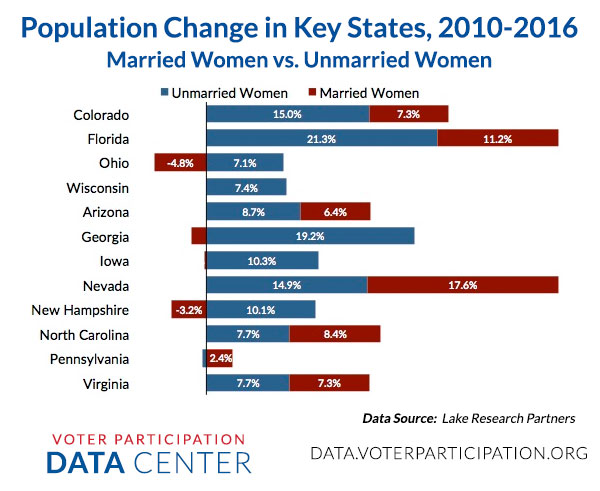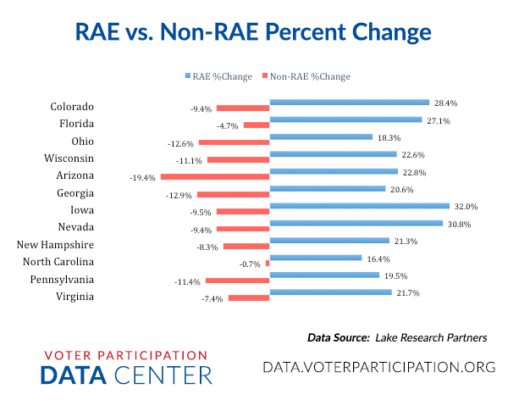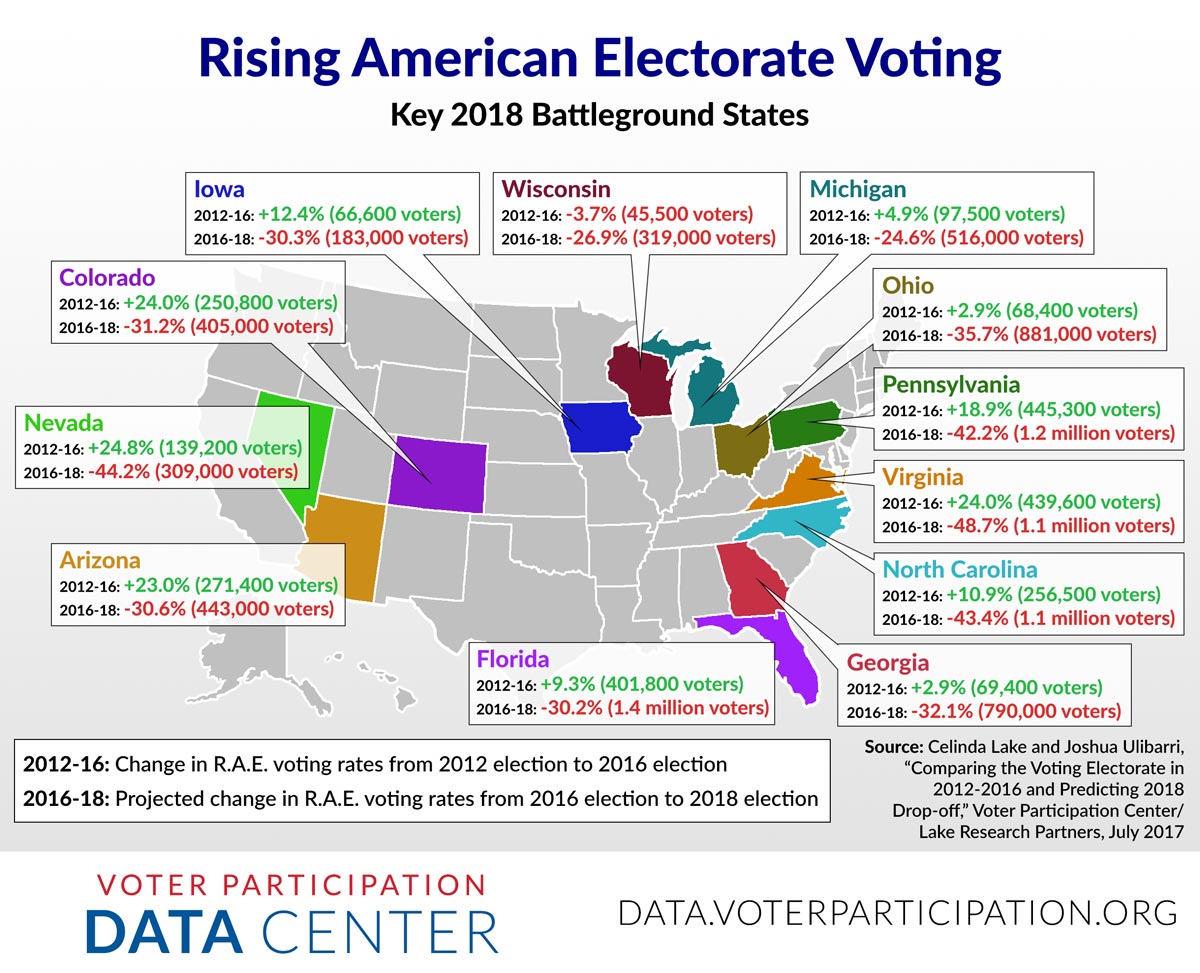Comparing the Voting Electorate in 2012-2016 and Predicting 2018 Drop-Off
As part of our ongoing efforts to understand the voting patterns of the Rising American Electorate, we’ve worked with Lake Research Partners to produce this report, which catalogues the changes in voting turnout for the Rising American Electorate between 2012 and 2016 – and makes projections for voter drop-off in 2018.
The projections are sobering and troubling to everyone who cares about increasing participation in our great democracy. Our prediction is that 40 million Americans who voted in 2016 won’t cast a ballot in the 2018 midterms — and to make matters worse, 2/3 of those drop-off voters will be members of the Rising American Electorate. The RAE dropoff is projected to be particularly pronounced in key 2018 battleground states, such as Arizona, Nevada, Florida, and Ohio:
Add in the effects of ongoing vote suppression efforts and the implication is clear: Democracy is facing a headwind in 2018. We need to double down on voter registration, mobilization and turnout efforts, and fighting for voting rights in order to make sure that every American has the opportunity to raise their voice at the ballot box.
Downloads
Unmarried Women: Growing in Numbers and the Power to Decide 2016 Elections
There are more than 58 million single women eligible to vote this November. For the first time ever, there are more single women than married women eligible to vote, and their numbers continue to grow nationally and in key states. And as the new poll of nine battleground states conducted for Women’s Voices Women Vote Action Fund shows, single women could determine the outcome of the presidential election and U.S. Senate races down-ballot.

Chart: Rising American Electorate vs. Non-RAE Percent Change
This chart showing the growth of the Rising American Electorate – unmarried women, people of color, and Millennials – in key states between 2010 and 2016 demonstrates quite clearly how broadly and quickly the face of America is changing.

All information was provided by Lake Research Partners.
2016 Primary Spotlight: Arizona, Idaho, and Utah
The race is coming down to the wire for the Republicans, with Tuesday’s contests in Arizona, Idaho and Utah the last for GOP contenders until Wisconsin votes on April 5.
Here’s where the delegate counts sit as the March 22 primaries and caucuses approach:
- Donald Trump currently has 678 delegates, 559 short of the number needed for the nomination. His closest rival, Sen. Ted Cruz (Texas), has 423 delegates, and Gov. John Kasich (Ohio) has 143. (Sen. Marco Rubio of Florida, who has suspended his campaign, also has 164 delegates.)
Here’s what at stake on Tuesday, March 22:
- Arizona – 58 Republican delegates (winner-take-all), 85 Democratic
- Idaho Democratic caucus – 27 delegates
- Utah – 40 Republican delegates*, 37 Democratic
Demographically, the most interesting state in play on Tuesday is Arizona, where Latinos now make up almost one-third (31 percent) of the state’s population and 26% of its eligible voters. Yet no Democrat has won a statewide election in Arizona since 2004, and voters continue to register as Republicans faster than as Democrats or even independents.
According to Francisco Heredia of Mi Familia Vota, which tries to increase Latino voting, the principal political struggle is between the state’s two fasting-growing populations: young Latinos and older people in Arizona’s retirement communities.
All told in Arizona, the Rising American Electorate—unmarried women, people of color and millennials—make up the overwhelming majority (60%) of the eligible voters in the state.
Learn more about unmarried women in Arizona, Idaho and Utah.
* The Utah GOP primary is winner-take-all if a candidate gets over 50% of the vote, but proportional otherwise.
Statistical Profile of Unmarried Women: Arizona
Our research team has compiled available data from the US Census Bureau, the Bureau of Labor Statistics, and other sources to put together this statistical profile of the demographic and economic circumstances facing unmarried women in the state of Arizona.
Report updated May 2017


